Review by Colin McKay
The Yaqin MS-12B is one of the rare objects in the DIY community to have reached “cult” status. I have spent much too much time parsing various DIY forums in pursuit of tweaks for this machine. As with all cult objects, the MS-12B is something that I hate to love. But, it is also an object that I love to hate. One moment, it will seduce me with its magic; and, during the next one, it will raise my blood pressure to unhealthy levels.
Above all, I can’t wait to open it up on the work bench and tweak it beyond all recognition. Let’s just say it will be “payback time”.
I will refer you to my recent review of the Yaqin MC13S stereo integrated amplifier, for a background on the company who produces this little beast. (link) I would just like to reiterate that that Yaqin designs and manufactures all its products in-house. They also use quality components through their gear’s circuit. They rely on time-tested classical tube circuits. And finally, they offer their products at very reasonable prices.
The stated specifications of the Yaqin MS-12B are as follows:
Tube compliments: 12AX7B × 2 and 12AU7 × 2;
Output voltages: dual outputs of either 0.25V or 0.7V;
Output jacks: two channels two group gold plated RCA jacks;
Input sensitivity: preamplifier ≤0.25V, phono stage ≤5mV;
Inputs: one CD/DVD jack, and one moving magnet phono jack;
Harmonic distortion: preamplifier ≤0.25%, phono stage ≤0.5%;
Frequency response of preamplifier is 15Hz to 100kHz @-2.0dB;
Signal-to-Noise Ratio: CD/DVD >75dB (input voltage of 0.5V, and output voltage of 0.7V @1kHz); Phono Input >65dB (input voltage of 10 millivolts, and output voltage of 0.7V @1kHz);
Phono stage suitability: moving magnet;
Supply voltage: AC115V 60Hz;
Weight: 3.0kg (7.7lb);
Dimensions : 17cm(W) x 38cm(D) x 16cm(H).
The MS-12B was tested in a system composed of Focal 836 VW speakers amplified by the Yaqin MC13S integrated. Audio components employed for CD playback were the Mytek 192-DSD DAC, and the Sony BDP-BX59 as a transport. A Toshiba Satellite laptop A660 OT4 was used for USB playback through the Mytek.
Vinyl was played back on the Well-Tempered Turntable and Arm. The arm has been rewired with Van Den Hul silver wire. A Roksan Chorus Black served as the pick-up cartridge. Of course, cartridge amplification, and RIAA equalization were executed by the Yaqin MS-12B preamplifier and phono stage. Various connecting cables were used during the listening sessions.
Let’s start with the power supply. What no wall wart? Yes, this is the good!
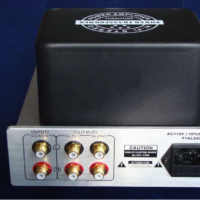 The input transformer is a hefty handmade E-core. It is more than ample for this circuit. The filter capacitors are high quality, and have adequate values. It should be remembered that tube circuits don’t need as much filtering; tubes are voltage amplifiers. Transistors are current-based amplifiers and require much more filtering than voltage amplifiers.
The input transformer is a hefty handmade E-core. It is more than ample for this circuit. The filter capacitors are high quality, and have adequate values. It should be remembered that tube circuits don’t need as much filtering; tubes are voltage amplifiers. Transistors are current-based amplifiers and require much more filtering than voltage amplifiers.
The MS-12B uses a high voltage transistor and diode controlled rectification. This type of rectification has a reputation for quickness, or better yet; for good agility. It is also very linear, that is, it is more solid in the lower octaves. However, these improvements come at the expense of a hardness that becomes noticeable, especially when the tubes are overdriven. It is much less expensive to build this circuit than to build a classic tube-rectified power supply. What the heck. At this price, I can live with high-speed diode rectification.
Above is a hand-drawn representation of the RIAA phono circuit executed by a MS12-B cultist over on the Lenco Heaven forum. He claims that he traced this design from a Neolithic cave painting in Vars, France. Joking aside, this quite a common circuit that is found on a lot of classic tube phono amplifiers.
The phono stage employs an active feedback RIAA equalization. Signal amplification duties are undertaken by a pair of 12AX7’s. Output impedance is regulated by a pair D669 transistors. This is not a complicated circuit. Yaqin executes it well with the generous application of high quality parts. The stage meets up with a pair of 12AU7s. Their principal job is to provide some minimal gain. After all, the 12Au7 is limited to a gain factor of 20 points. It also provides the driver/phase splitting stage for the CD/DVD input. In this sense, you should look at this stage, more so, as a tube buffer stage. It is a necessary buffer stage. It allows us to use various lengths of cables to hook this up this unit to an amplifier without suffering excessive variations in output impedance.
There is one aspect of the design that did leave me scratching my head. In the RIAA phono circuit, how can that lonely 12AX7 manage to amplify a 5 millivolt input signal to a 0.7 volt output signal? That’s a gain factor of over 140. That poor tube is being pushed too far.
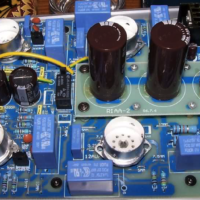 But let’s not fault Yaqin too harshly. Remember, this is budget gear we are working with. Their literature provides us with honest measurements. Total harmonic distortion is ≤0.5%. The signal-to-noise ratio is >65db at 1kHz. This little tube has been tasked to work very close to its outer most limits! And when the tube hits those outer limits, hum and noise are clearly audible. Of course, this may lead to higher than normal blood pressure levels.
But let’s not fault Yaqin too harshly. Remember, this is budget gear we are working with. Their literature provides us with honest measurements. Total harmonic distortion is ≤0.5%. The signal-to-noise ratio is >65db at 1kHz. This little tube has been tasked to work very close to its outer most limits! And when the tube hits those outer limits, hum and noise are clearly audible. Of course, this may lead to higher than normal blood pressure levels.
So what else could be done? One solution would be to integrate one or two more tubed phono gain stages. But, that would easily double or triple the cost of this unit. For, example my Grant G60S Moving Magnet phono amplifier section is a three stage six tube affair. There is whole lot less noise and hum.
Others find this the perfect pretext to tear it apart, and rebuild it with quieter and much more expensive parts. I would simply start with improving the grounding. I would then reroute some of the more sensitive signal path wiring. For example, look at the at the implementation of the yellow wiring in the above photo. Alright class, can you tell me if that wiring is good or bad? Oh my goodness! I think I have become an MS12-B cultist.
Seriously, the best solution is to recognize the limits of this circuit and play the unit within those limits. I will explain these limits later on in the listening sessions.
Lastly, you can change the rather generic tubes for higher quality and quieter ones.
The biggest game changer here is upgrading that phono section’s tubes. Honestly, there is nothing printed on those 12AX7 tubes that came with my unit. Perhaps they were found in that very same cave in Vars. At least they were marked 12AX7.
I had one of those moments. Less gain equals less noise, n’est-ce pas? I took out the 12AX7s and replaced them with the Chinese 12AU7s. Guess what? There was almost no noise, but gain was wholly inadequate. Also, the lower end of the bandwidth was truncated.
I then went to find some tubes that I had kept as spares for some old Philips stereo recording microphones. They were a pair Valvo ECC81. The codes of the Valvos announced they were made in the Hamburg plant in 1961. They also had the cryptic code AUV acid-etched on them. Who knows? But, the gentleman at Sam’s (the record man) indicated that the etching meant they were graded for use in microphones.
The Valvo ECC81’s gain rate is 65% versus the 12AX7s 100%. Sure, it loses some gain. But, I clearly recognized a drop in the levels of hum and noise. In my opinion, the unit’s bandwidth had notably improved, especially, in its performance through the lower frequencies. I suspect this is due to the 12AT7’s higher cathode plate amperage. Also, I substituted the Chinese 12AU7s with a pair of late sixties long smooth plate Telefunken 12AU7s. Now, the music started to emerge from the shadows. (Editor’s note: the 5751 is another great choice for phono, with lower noise and only slightly less gain than the 12ax7. It worked wonders in my MP-P1)
While I was writing this review, a friend visited me for an afternoon of critical listening. To demonstrate the phono section’s noise, I turned the phono-preamp up to full volume. Yes, it was there, loud and clear. I backed down the volume to a realistic 50% volume. Though this was still well above our afternoon’s listening levels, the speakers were dead silent. I felt reassured that we would not be bothered by noise and hum.
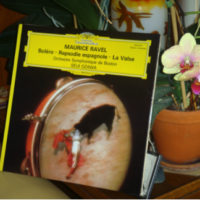 My friend was particularly enchanted by the 1974 Deutsche Gramophone Prestige edition of Maurice Ravel’s Bolero / Rapsodie Espagnole / La Valse. It was performed by the Boston Symphony Orchestra, and conducted by Seiji Ozawa. This is a true classic. It is also a beautiful recording. From its quiet opening moments to thunderous finale; it presents a challenge to any playback system.
My friend was particularly enchanted by the 1974 Deutsche Gramophone Prestige edition of Maurice Ravel’s Bolero / Rapsodie Espagnole / La Valse. It was performed by the Boston Symphony Orchestra, and conducted by Seiji Ozawa. This is a true classic. It is also a beautiful recording. From its quiet opening moments to thunderous finale; it presents a challenge to any playback system.
As we began to listen to Bolero, my first impression was that the Yaqin presented a very realistic stage. The full spread of the orchestra was presented in a wide and deep relief. It painted a very accurate image. I was able to immerse myself into each section of the orchestra, and truly appreciate the timbres of the oboes as they danced with the clarinets. The brass section was also entrancing. The harmonics of the trumpets were superb. The attack and decay of their notes were faithfully reproduced. As the tempo and rhythm of the Bolero increased, the phono section never ceased to render the music’s macro dynamics and subtle details. The percussion section, notably the kettle drums that underpin the score, were never falsely overblown. After the piece reached its thunderous climax, my friend and I looked at each other and nodded. Indeed, the Yaqin MS-12B had met the challenge that the Well-Tempered Turntable presented it with. The only electro-mechanical noise that I was able to detect was the barely noticeable hiss of the Roksan’s Gyger II stylus as it travelled between tracks on the album.
Another album which struck our fancy was Lou Reed’s 1989 album entitled New York. In my humble opinion, this is his finest solo album. On the back of the album cover, Lou insisted that it must be listened to as a story. Indeed, it is a story, of the New York of the late 1980’s. The New York where Lou and his closest friends were still hanging out, and, still managing to produce that New York sound. I would like to refer you to Anthony DeCurtis`s 1989 revue of the album form Rolling Stone magazine. (link)
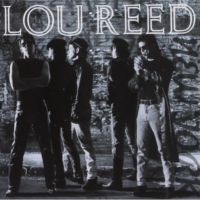 There is no time is Lou`s punk rock anthem for the 1990s. Turn this song up. What I like about it is the interplay between the two guitars. From the get go they both overload their guitar amps. The distorted overtones were laid out beautifully. The frenetic drumming and bass playing was as snappy as it gets. Lou Reed actually gets a bit excited singing this song. That is truly a rare event. The growl in his chest could be felt by my chest. Yup, it was that loud. The Yaqin not only drew me in to the song, but, it made me part of it. All was nice, except that annoying little hum between tracks. We can’t always get what we want with budget gear.
There is no time is Lou`s punk rock anthem for the 1990s. Turn this song up. What I like about it is the interplay between the two guitars. From the get go they both overload their guitar amps. The distorted overtones were laid out beautifully. The frenetic drumming and bass playing was as snappy as it gets. Lou Reed actually gets a bit excited singing this song. That is truly a rare event. The growl in his chest could be felt by my chest. Yup, it was that loud. The Yaqin not only drew me in to the song, but, it made me part of it. All was nice, except that annoying little hum between tracks. We can’t always get what we want with budget gear.
During that afternoon’s listening session with my friend, he asked me to plug in my Mytek DAC into the Yaqin’s CD/DVD input. After listening to a few songs through it, I asked if I should re-plug the DAC directly back into the integrated amplifier. His reply was no. Let’s leave it plugged into the Yaqin MS12-B.
I spent a great deal of time testing the CD/DVD input, and yes, it does add positive aspects do the listening experience. To describe the differences to you, let’s take a song from Galen Weston’s new album called Plugged In. This a great album. The second track is entitled Song for Daphne. This is a song that will bring you back to the heyday of electronic lounge jazz. Anyone for martinis at the Hilton?
(For a limited time, the entire album is available as a free download. Just follow this link. Weston is also highlighting the Norfolk County’s 3rd Annual South Coast Jazz Music Festival. It looks like a whole lotta fun. link)
 The first change that I noticed when playing Song for Daphne through the Yaqin was that that image had grown larger in width, height and depth. Galen’s guitar remained front and center. However, the drummer had moved back noticeably; and the piano had resumed a more realistic place on the left. The overall tonalities of the recording came through clearer.
The first change that I noticed when playing Song for Daphne through the Yaqin was that that image had grown larger in width, height and depth. Galen’s guitar remained front and center. However, the drummer had moved back noticeably; and the piano had resumed a more realistic place on the left. The overall tonalities of the recording came through clearer.
However, these improvements came at price. The details, nuances, and overall transparency of the song took a turn for the worse. In addition, the lowest octaves lost some weight and authority. The best compromise was to bypass the Mytek’s preamplifier completely. I personally left my Mytek directly connected to the Yaqin MC13S integrated. I will leave it to those who decide to purchase this unit, to make a choice based on their personal preferences. Noise levels on the CD/DVD input were acceptable. My Focals are rated at 92 Db sensitivity. They produced only the slightest hum when turned up fully on the 0.7 volt setting. The 0.25 volt output exhibited almost no hum.
I remain divided on recommending the Yaqin MS-12B. It now sells for around $450 Canadian (2021), at Lee’s Electronic in BC. If you’re like me, and you really enjoy the superior sound stage and tonality of a tube phono preamplifier, well, there are very few out there at this price point. The single input CD/DVD tube preamp/ buffer stage is not an afterthought. It is a very good preamp stage that could add new dimensions to your listening experience. During the evaluation period, I found it a excellent companion to the Yaqin MC13S integrated.
If you like to try your hand at modding, the Yaqin is a modder’s dream. You have an excellent power supply, components, and chassis to work with. It is really one of the most popular units in today’s modding community.
On the other hand, this unit revealed some hum and noise levels that needed attention. You really have to respect the Yaqin’s design limitations. They do push those 12AX7’s a wee bit too hard. If you stray beyond those limits, you may be rewarded with some genuine irritation, especially if you like to play your music at very loud levels. So, if you are looking for a completely irritation free-experience, I would suggest a transistor-based unit such as the Lounge Audio’s LCR Mk.III phono stage, reviewed here by Noam Bronstein.
Yaqin MS12-B Phono Preamplifier, street price $299 USD + shipping
Supplier: Canadian Hifi Online (reviewer purchase)

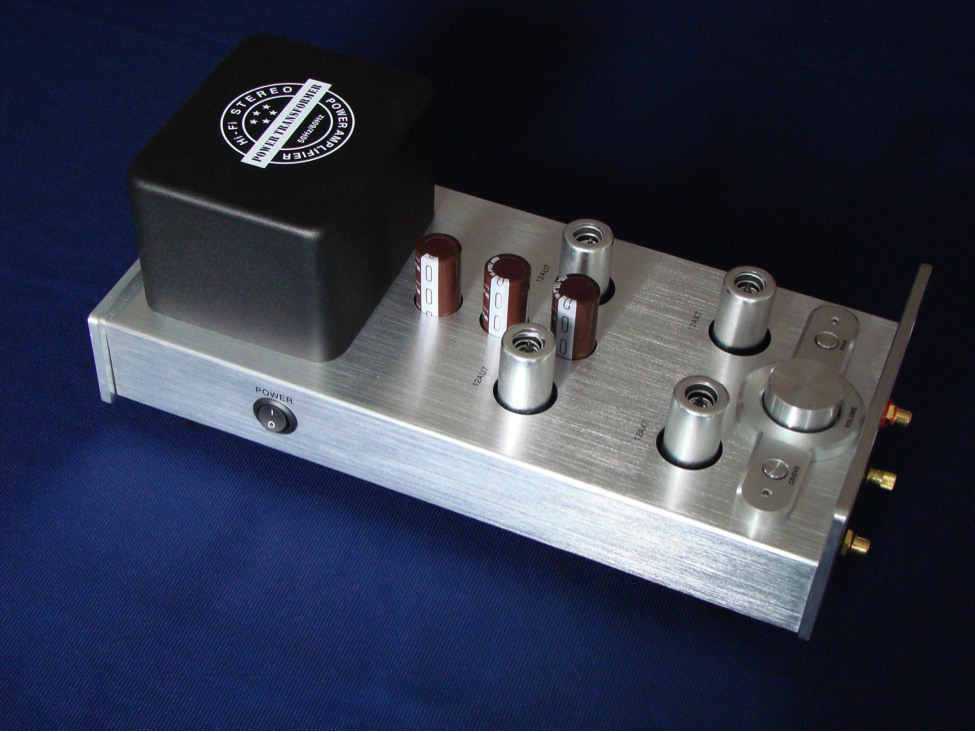
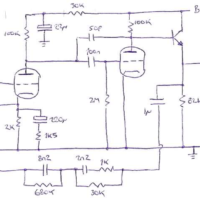
Can this be used as just a phono pre, effectively bypassing the pre-amplifier?
Yes indeed. The phono section is completely independent.
I own a Yaquin (diss!)integrated amprifryer, this review nicely details how you get no more than you pay for: incompetent design, idiotic layout, crappy valves & shiny cosmetics to fool the rubes. Take it from someone who knows: DON’T! Unserviceable rubbish!!!
Which model do you have, and what was the trouble?
I have an older MS-20L amp and it’s built well and wired competently. No issues, very good sq.
Yaqin’s not even a review provider or sponsor of this site, some of us just like their stuff.
Noam
Hi there
A quick one if I may. I have one of these phono pre amps. One of my speakers will occasionally ‘pop’ very loudly. Does this make any sense? If so could you recommend a solution.
I’m uk based
Cheers
Hi Charlie,
You might want to get the tubes tested, or have a technician check the operation if it’s getting on in years. You may be able to self-diagnose whether the tubes are going, by swapping tubes Left to Right and seeing if the problem “follows” to your other speaker. If it does, then change both tubes for new ones and you should be all set.
Noam
I used to have a solid state amp that did that intermittently. Turns out it was a capacitor. So, if Noam’s trouble-shooting idea doesn’t work, you may want to get it looked at.
I wished this pre had additional inputs. Overall it is a solid performer with few faults. If you see one for sale, buy
it.😁
It’s tube complement, not compliment.
Hello, I’m a electrician thinking of wireing my 110v power outlet with is owne ground direct from a iron pole in the ground so insolated from the brakes panel.
Would it improve a bit ?
Hi Eric,
The consensus among people who do these things is that it does make a difference. Likely moreso on a higher resolution system. As to all the reasons, you might be in a better position to explain them to us. -)
Thanks for reading and commenting.
Noam